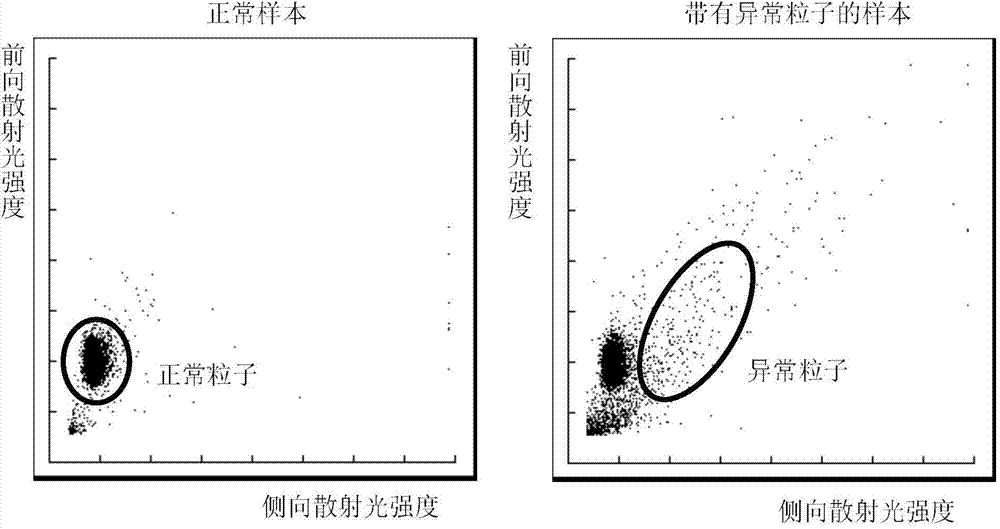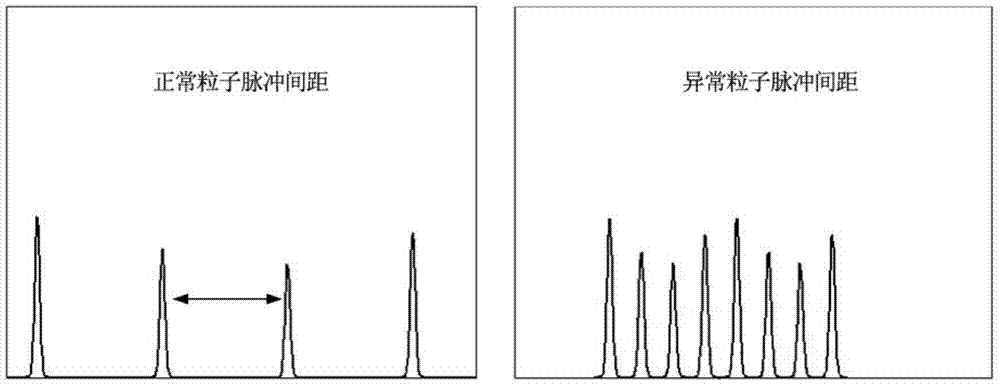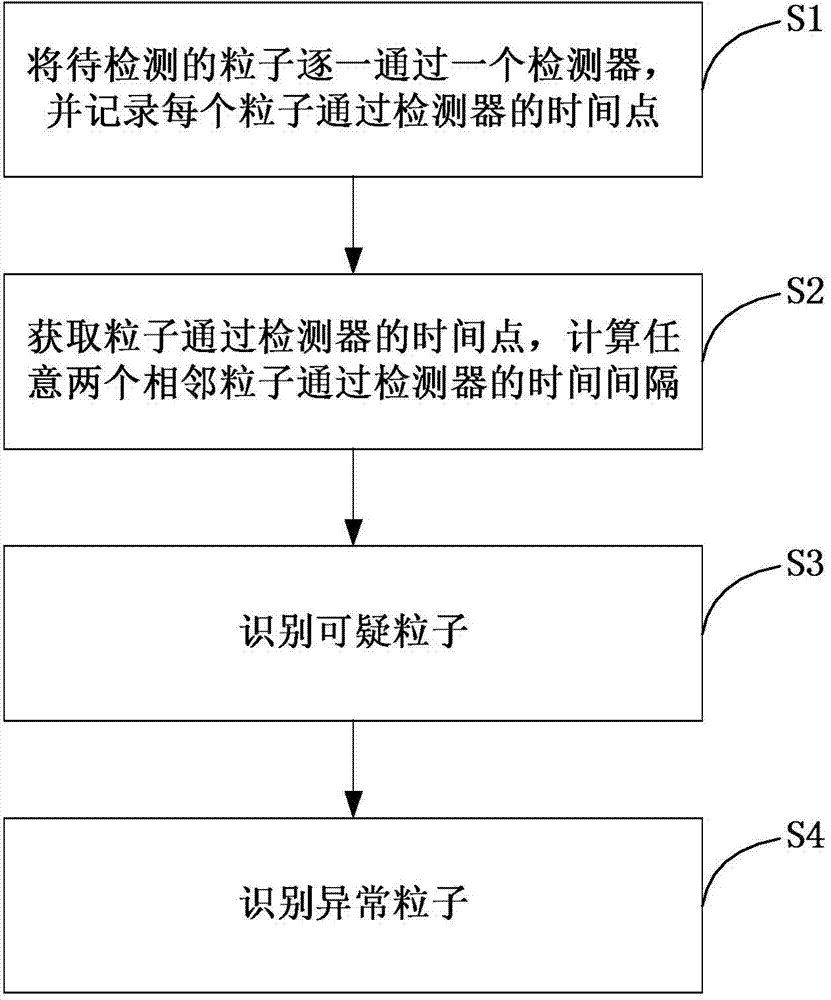Method and system for recognizing abnormal particles and cell analyzer thereof
A particle and abnormal technology, applied in the field of a method and system for identifying abnormal particles and its cell analyzer, can solve problems such as interference with cell counting, achieve accurate information support, and improve accuracy
- Summary
- Abstract
- Description
- Claims
- Application Information
AI Technical Summary
Problems solved by technology
Method used
Image
Examples
Embodiment 1
[0033] like image 3 As shown, the embodiment of the present invention provides a method for identifying abnormal particles, which specifically includes the following steps:
[0034] S1. Pass the particles to be detected through a detector one by one, and record the time point when each particle passes the detector; in the embodiment of the present invention, assuming that the detector detects a total of N+1 particles, each particle passes the detection The time point of the device is respectively T 1 ,T 2 ,...,T N+1 .
[0035] S2. Obtain the time point when the particle passes the detector, and calculate the time interval between any two adjacent particles passing the detector:
[0036] d i =T i+1 -T i , i=1, 2, ..., N;
[0037] Among them, T i is the time point when the i-th particle passes the detector, T i+1 is the time point when the i+1th particle passes the detector, d i is the time interval between the i-th particle and the i+1-th particle passing through th...
Embodiment 2
[0049] like Figure 4 As shown, the embodiment of the present invention is improved on the basis of the first embodiment. Specifically, in addition to the steps S1 to S4 described in the first embodiment, the embodiment of the present invention also includes subsequent steps:
[0050] S5. Alarm: When the ratio of the number of abnormal particles to the total number of particles exceeds a set value, the corresponding particle measurement result is regarded as interference, a prompt is output, and an alarm is issued. For example, an alarm device outputs an alarm signal, or displays alarm information on a human-computer interaction interface.
[0051] Wherein, there are many methods for determining the set value, and embodiments of the present invention provide the following methods to determine the set value:
[0052] Method 1: first randomly select a number of normal samples, and count the ratio of the number of abnormal particles to the total number of particles; then randoml...
Embodiment 3
[0057] like Figure 5 As shown, the embodiment of the present invention is improved on the basis of the first embodiment. Specifically, in addition to the steps S1 to S4 described in the first embodiment, the embodiment of the present invention also includes subsequent steps:
[0058] S5. Excluding abnormal particles. Specifically, the embodiment of the present invention provides two ways to exclude abnormal particles. Wherein, the first way is to ignore the abnormal particles in the subsequent statistics and analysis, for example, delete the points corresponding to the abnormal particles from the scatter diagram and so on. The second method is to subtract the number of abnormal particles from the total number of particles, and the result obtained is the actual total number of particles after excluding abnormal particles.
[0059] The second exclusion method will be introduced in detail below, specifically, because in S4, any one or any two or three of Class A suspicious par...
PUM
 Login to View More
Login to View More Abstract
Description
Claims
Application Information
 Login to View More
Login to View More - R&D
- Intellectual Property
- Life Sciences
- Materials
- Tech Scout
- Unparalleled Data Quality
- Higher Quality Content
- 60% Fewer Hallucinations
Browse by: Latest US Patents, China's latest patents, Technical Efficacy Thesaurus, Application Domain, Technology Topic, Popular Technical Reports.
© 2025 PatSnap. All rights reserved.Legal|Privacy policy|Modern Slavery Act Transparency Statement|Sitemap|About US| Contact US: help@patsnap.com



